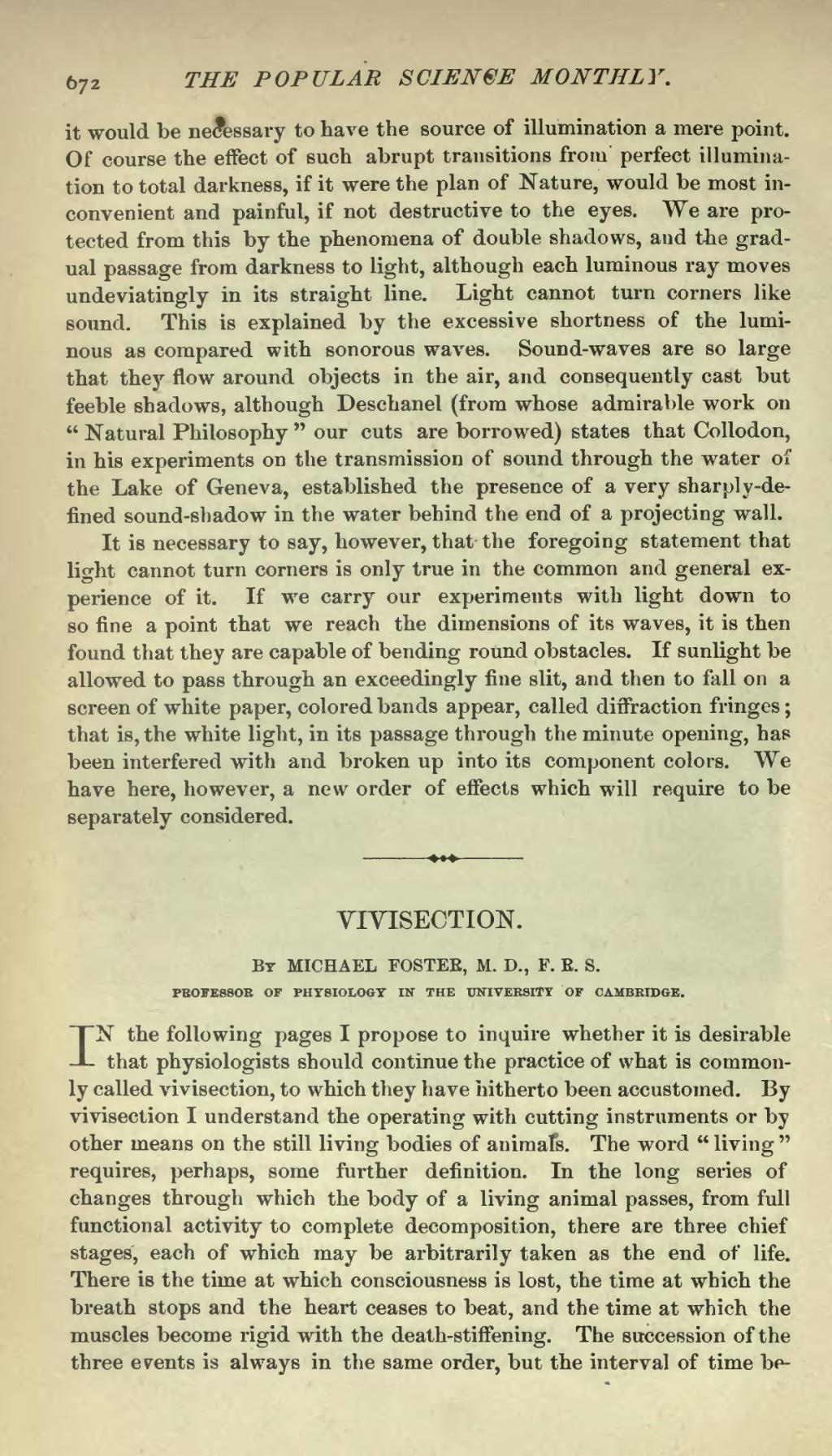it would be necessary to have the source of illumination a mere point. Of course the effect of such abrupt transitions from perfect illumination to total darkness, if it were the plan of Nature, would be most inconvenient and painful, if not destructive to the eyes. We are protected from this by the phenomena of double shadows, and the gradual passage from darkness to light, although each luminous ray moves undeviatingly in its straight line. Light cannot turn corners like sound. This is explained by the excessive shortness of the luminous as compared with sonorous waves. Sound-waves are so large that they flow around objects in the air, and consequently cast but feeble shadows, although Deschanel (from whose admirable work on "Natural Philosophy" our cuts are borrowed) states that Collodon, in his experiments on the transmission of sound through the water of the Lake of Geneva, established the presence of a very sharply-defined sound-shadow in the water behind the end of a projecting wall.
It is necessary to say, however, that the foregoing statement that light cannot turn corners is only true in the common and general experience of it. If we carry our experiments with light down to so fine a point that we reach the dimensions of its waves, it is then found that they are capable of bending round obstacles. If sunlight be allowed to pass through an exceedingly fine slit, and then to fall on a screen of white paper, colored bands appear, called diffraction fringes; that is, the white light, in its passage through the minute opening, has been interfered with and broken up into its component colors. We have here, however, a new order of effects which will require to be separately considered.
| VIVISECTION. |
By MICHAEL FOSTER, M. D., F. R. S.
PROFESSOR OF PHYSIOLOGY IN THE UNIVERSITY OF CAMBRIDGE.
IN the following pages I propose to inquire whether it is desirable that physiologists should continue the practice of what is commonly called vivisection, to which they have hitherto been accustomed. By vivisection I understand the operating with cutting instruments or by other means on the still living bodies of animals. The word "living" requires, perhaps, some further definition. In the long series of changes through which the body of a living animal passes, from full functional activity to complete decomposition, there are three chief stages, each of which may be arbitrarily taken as the end of life. There is the time at which consciousness is lost, the time at which the breath stops and the heart ceases to beat, and the time at which the muscles become rigid with the death-stiffening. The succession of the three events is always in the same order, but the interval of time be-

